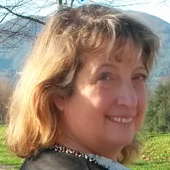- double bass
- Stanley Black
- Byron Janis
- Dunelm Records
- Ellen MacDonald-Kramer
- Karol Szymanowski
- Enrico Onofri
- Nina Berman
Earth and the Future of Mankind
GIUSEPPE PENNISI experiences 'Koyaanisqatsi', by Philip Glass, in Rome
The National Santa Cecilia Academy and the Romaeuropa Festival have brought to Rome a rarity for Italy: Koyaanisqatsi, a 1982 experimental film-symphony directed by Godfrey Reggio with Philip Glass' music. It is the first film in the qatsi trilogy (named after an Indian tribe in the United States). Koyaanisqatsi is a word in the Amerindian hopi language and means 'life in turmoil', or 'crazy life; tumultuous life; life in disintegration; unbalanced life'.
The trilogy also includes Powaqqatsi (1988) and Naqoyqatsi (2002). The film has neither plot nor dialogue. It is a collage of various clips, often accelerated or slowed down, which mainly want to depict the development of current civilization as we know it. The film guides the viewer through a journey that begins with nature and then passes to the intervention of man and becomes increasingly frenetic, all underlined by the score of Philip Glass (born 1937), a leader of twentieth-century American music (minimalism) whose works are unfortunately rarely represented in Italy. As far as I know, Koyaanisqatsi was performed in Italy only once by RAI (the State radio and television company) ensembles in Turin in 2005 as part of a contemporary music festival.
For three evenings (11, 12 and 13 November 2021) the orchestra and chorus of the Santa Cecilia National Academy conducted by Michael Reisman and reinforced by the Philip Glass Ensemble, founded in 1968 by the composer as a vehicle for minimalist contemporary music, performed the score while the images flowed on a large screen.
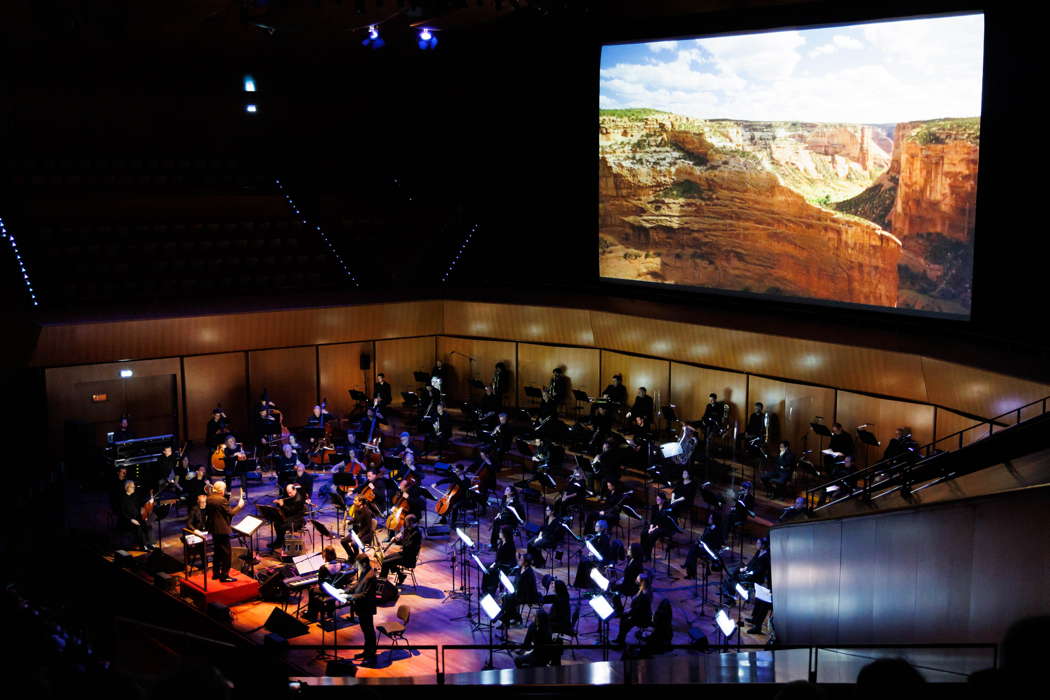
A scene from the 11 November 2021 Accademia Nazionale di Santa Cecilia / Romaeuropa Festival performance of Koyaanisqatsi by Philip Glass in Rome. Photo © 2021 Musacchio; Ianniello & Pasqualini
I went to the third of these performances to capture the impressions of the audience. While those who follow the Romaeuropa Festival love innovation and contamination between genres, subscribers to the symphonic season of the Accademia Nazionale di Santa Cecilia tend to be conservative; management is gradually bringing them closer to modern music. There was a happy surprise: full orchestra and central gallery seats - the side ones were left empty because visibility of the projection would have been very limited - and there were numerous young people in the audience.
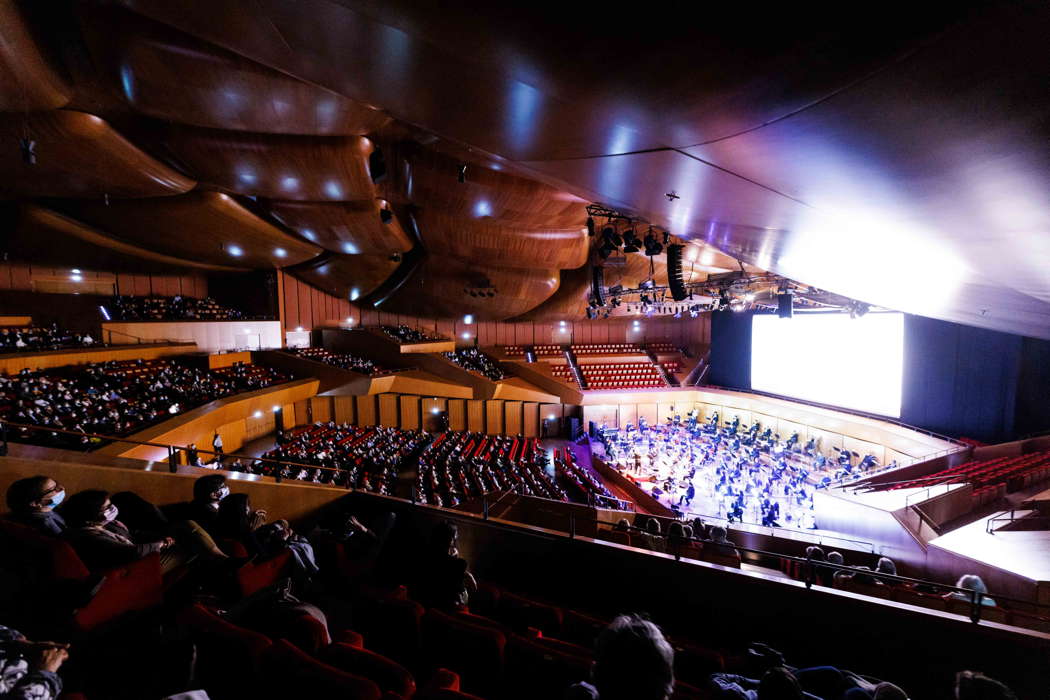
A scene from the 11 November 2021 performance of Koyaanisqatsi by Philip Glass at the Parco della Musica Auditorium in Rome. Photo © 2021 Musacchio; Ianniello & Pasqualini
The concert with footage fits perfectly with the COP26 climate conference just held in Glasgow. After a first part dedicated to unspoilt nature, you can see images of clips and satellite photos depicting metropolitan areas. Some footage shows people from all walks of life, from beggars to rookies. There is also the take-off of a rocket, which, however, explodes a few seconds after departure. The montage suggests that it is a single rocket, when in fact two different sources were used: the first sequence of footage comes from the launch of the Apollo 11 Saturn V rocket while the subsequent one portrays the explosion of the first Atlas-Centaur rocket in May 1962. The camera chases the debris of a burning engine and the trails of white steam and smoke in contrast to the blue sky, as the debris plummets to the ground. At the end of the sequence, the translation of the term Koyaanisqatsi and the prophecy sung during the last passage of the film appear on the screen. The film ends with a shot of rock art similar to the one shown at the beginning. The film required six years of filming, editing, re-shooting and re-editing before being completed.
Philip Glass' score, considered one of the best of the Baltimore composer, is a great symphony (of about ninety minutes) in six movements in which unspoiled nature is juxtaposed to metropolitan chaos.
The first movement (Koyaanisqatsi) begins with the background of organ, strings and an extremely dramatic and disturbing baritone choir. Next comes Vessels, dominated by a choir of sopranos, a heavenly metaphor for the majesty and beauty of nature. Then a hypnotic and repetitive background of synthesizers takes over. The third movement (Cloudscape) opens with strings and brass that make up a disturbing and hostile melody and then transforms into a more reassuring register. Strings and winds are also protagonists in the fourth movement (Pruitt Igoe): the tones and atmospheres are increasingly dramatic, almost anticipating an imminent catastrophe.
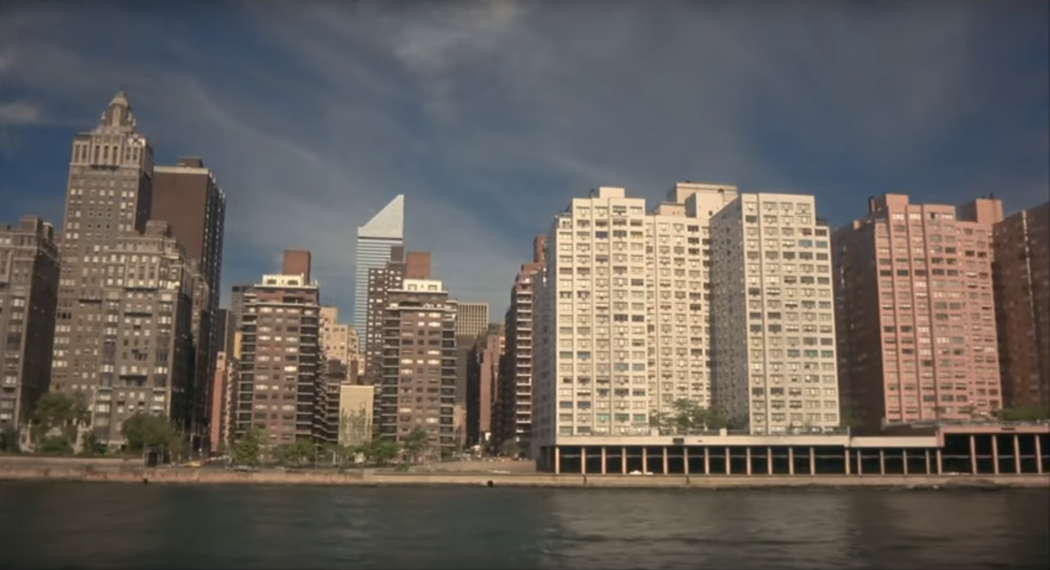
A scene from near the beginning of the 'Pruitt Igoe' section of the film Koyaanisqatsi directed by Godfrey Reggio and with cinematography by Ron Fricke. Screenshot © 1982 Metro Goldwyn Mayer
Violins, cellos and brass, more than the choirs reminiscent of Carl Orff's Carmina Burana, are perfectly merged in an extraordinary composition of great emotional impact. The fifth movement (The Grid) has typically minimalist phrasing with church organ, wind instruments and violins, and features a very pressing and fast rhythm like the human condition in large metropolises. Then suddenly a female polyphonic soprano choir of great suggestion takes over. Prophecies closes with a melancholic line of pipe organ and a liturgical choir, concluding this incredible journey of images and music on the destiny of man.
Thus it is well-tempered minimalism: there are the lyrical abandonments of the strings and almost post-Wagnerian chords entrusted to cellos and brass. This is very different from the minimalism of Steve Reich, who, in City Life, which I heard this summer at the Chigiana Festival, deals with partly similar themes. (See The Seven Year Itch, 30 July 2021).
Koyaanisqatsi is a fascinating score to listen to but difficult to perform. In the first place, we need full harmony between orchestra and images. Secondly, it is necessary to integrate the Philip Glass Ensemble - two electronic keyboards, three saxophones, a flute and a piccolo, with a set of sound engineers - with elements of a normal symphony orchestra.
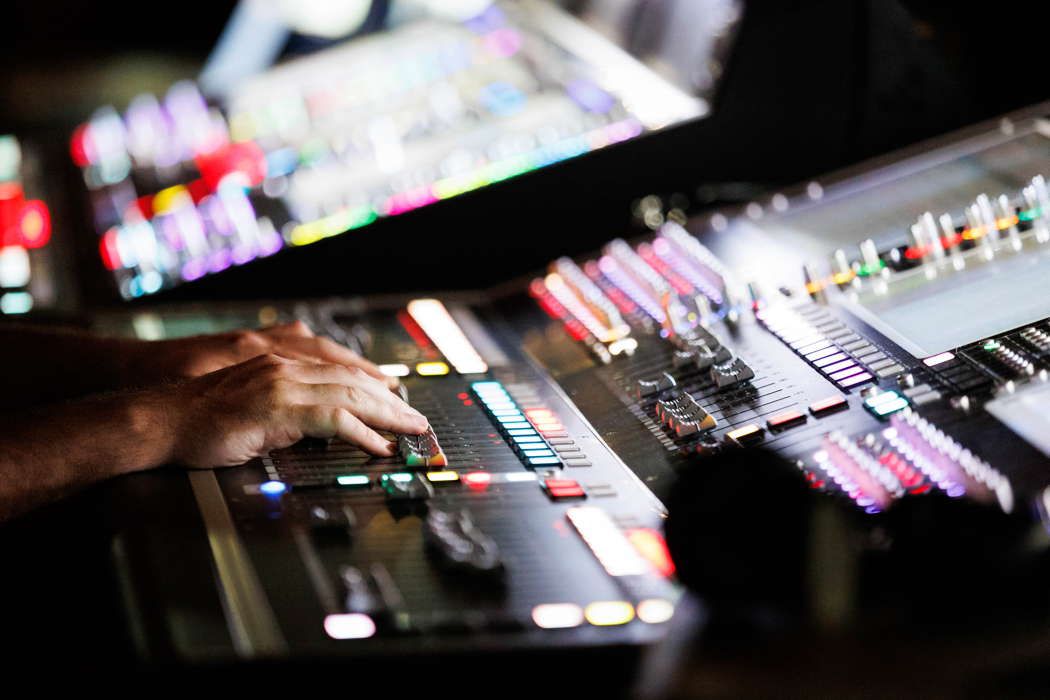
Mixing the sound for Koyaanisqatsi by Philip Glass on 11 November 2021 in Rome. Photo © 2021 Musacchio; Ianniello & Pasqualini
In addition, the Philip Glass Ensemble knows the score inside out while for the members of the Santa Cecilia Symphony Orchestra this is probably a first performance. Michael Reisman has been at the helm of the ensemble for years and has succeeded perfectly in these tasks.
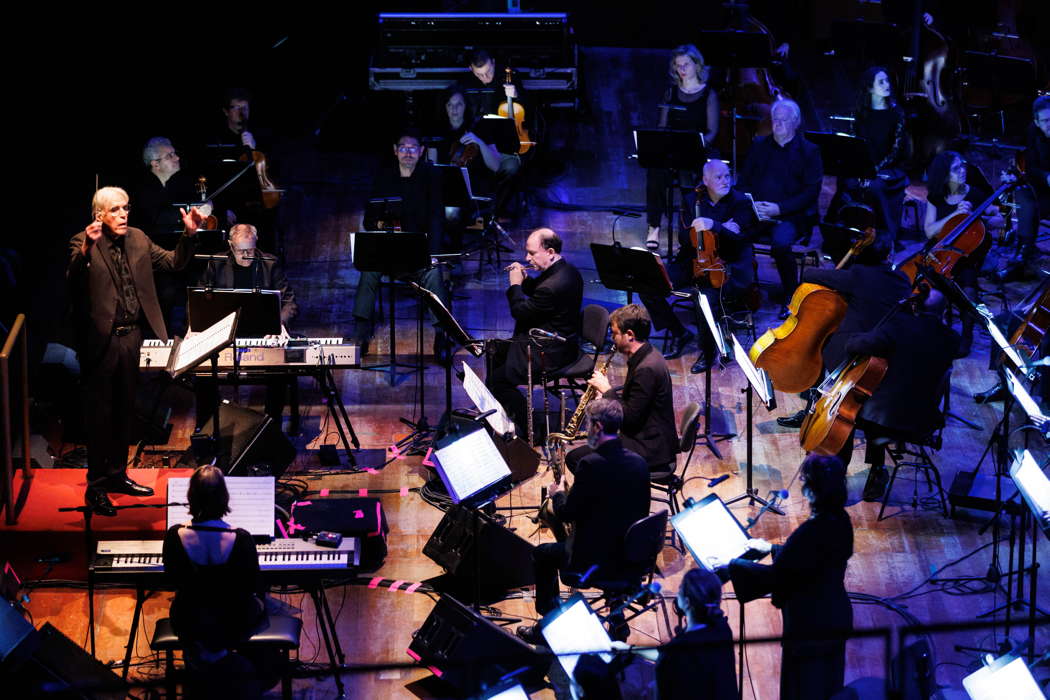
Michael Reisman conducting Koyaanisqatsi by Philip Glass on 11 November 2021 in Rome. Photo © 2021 Musacchio; Ianniello & Pasqualini
I do not know how many rehearsal sessions were needed. As always, the chorus, prepared by Piero Monti, was very effective.
The audience responded with ovations.
Copyright © 16 November 2021
Giuseppe Pennisi,
Rome, Italy

ACCADEMIA NAZIONALE DI SANTA CECILIA



